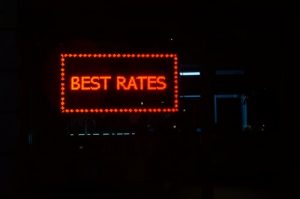The Federal Reserve is one of the many influences on mortgage rates, along with inflation, economic growth, and other factors.
The Federal Reserve does not set mortgage rates but indirectly affects mortgage rates.
Many factors determine mortgage rates, including the rate of inflation, the rate of job creation, and whether the economy grows or slows down. The Federal Reserve’s monetary policy also plays a role and is determined by the Federal Open Market Committee.
What the Federal Reserve does
The Federal Reserve is the country’s central bank. It manages the economy with the dual objective of promoting employment growth while controlling inflation.
The FOMC pursues these monetary policy objectives: to manage the money supply and the cost of credit. The most important monetary policy instrument is the federal funds rate, the interest rate that banks charge each other for short-term loans. While there is no “federal mortgage rate,” the federal rate affects interest rates on long-term loans, including mortgages.
The FOMC meets eight times a year about every six weeks to change monetary policy. Most meetings do not result in changes to the federal rate. At the end of each meeting, the committee makes a statement explaining its reasons. The meeting minutes will be released three weeks later, giving Fed nerds even more details.
Are Mortgage Rates Following Fed Rates?
The Fed and the mortgage market act like dancing partners: sometimes the Fed leads, sometimes the mortgage market leads, and sometimes they dance alone.
The prime rate and mortgage rates generally move in the same direction. However, it is difficult to say whether mortgage rates will follow Fed action or vice versa.
The federal funds rate affects interest rates on longer-term loans, including mortgages.
The FOMC prefers to inform investors whether it intends to raise or lower short-term interest rates. Committee members make their intentions known by adding notices in their public speeches. When the committee meets, there is general consensus among investors on whether the Fed will cut rates, raise rates, or leave them unchanged.
As that consensus consolidates ahead of an FOMC meeting, mortgage rates generally diverge in the direction the Fed is likely to take. By the time of the meeting, mortgage rates often already reflect the trend. expected rate change.
At the same time, mortgage rates rise and fall daily in response to the ups and downs in the US and global economies to which the Fed is responding. Sometimes the Fed and mortgage rates move in opposite directions.
What is the current federal rate?
The targeted federal funding ratio has been between 0% and 0.25% since an emergency shutdown on March 15, 2020. The emergency was the COVID-19 pandemic and the resulting disruption to economic activity.
“The effects of the coronavirus will have a short-term impact on economic activity and threaten the economic outlook,” the interest rate committee said.
At its regular meeting on July 28-29, 2020, the FOMC said the trajectory of the economy “will largely depend on how the virus evolves.” He said he plans to keep the federal government rate near zero until employment and inflation return to normal.
The Fed has started buying government bonds and mortgage-backed securities valued at hundreds of billions of dollars in order to keep liquidity in the financial system and keep long-term interest rates low.
Federal funds rate and HELOC
While the Fed doesn’t set mortgage rates, it has a direct impact on mortgage interest rates, which typically have adjustable rates.
HELOC rates are tied to the Wall Street Journal Prime rate, the prime rate for business loans from the largest banks. The key rate in turn moves with the federal key rate.
When the FOMC cuts the policy rate, HELOC rates also decrease. The 1 percentage point reduction on March 15 will save $100 per year or $8.33 per month in interest payments on a HELOC with a balance of $10,000. He cut the key rate from 4.25% to 3.25%.



